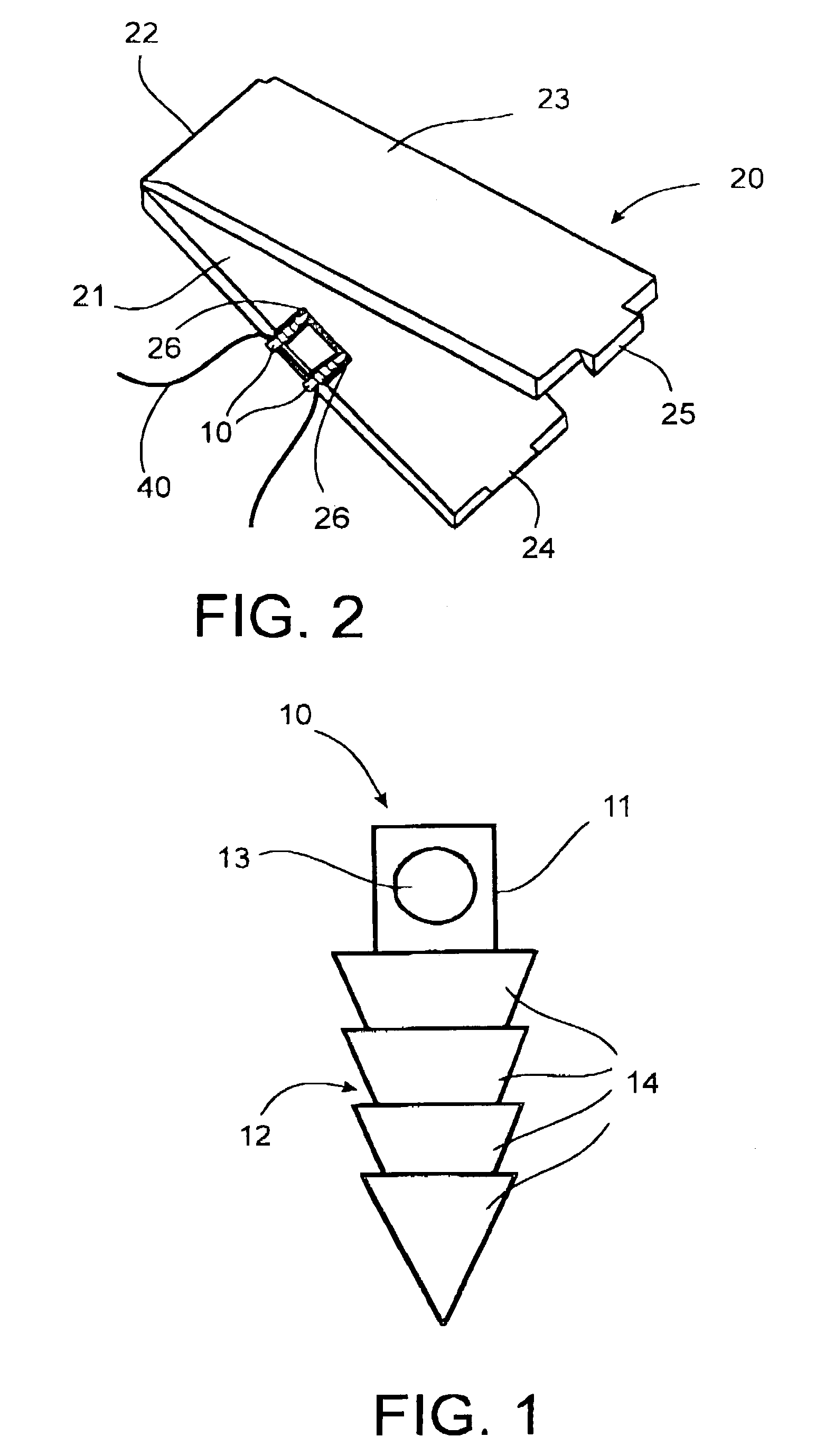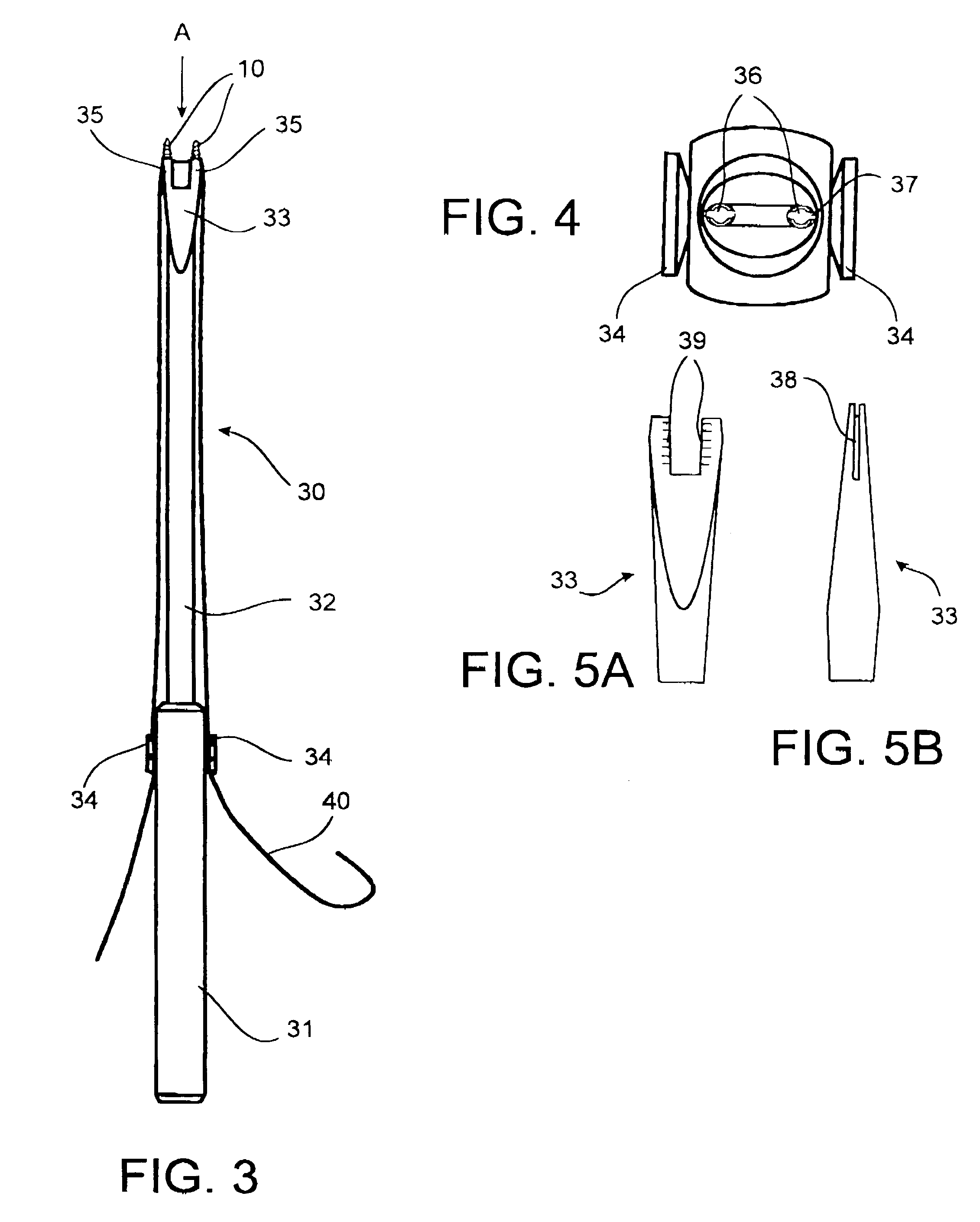Method for fixing a soft tissue on a bone
a soft tissue and bone technology, applied in the direction of nails, staples, applications, etc., can solve the problems of tissue necrosis, bone piercing, and difficult to determine the exact positioning spot,
- Summary
- Abstract
- Description
- Claims
- Application Information
AI Technical Summary
Benefits of technology
Problems solved by technology
Method used
Image
Examples
Embodiment Construction
[0026]Referring to the figures, the fixing system according to the invention consists of two pins 10 for attaching a connective tissue, such as the extremity of a tendon or ligament, to a bone ridge during reparative surgery. In order to facilitate the imposition of the two pins by inserting them in the bone simultaneously with a defined space between them, as when using staples, the fixing system as illustrated by the figures has, as well, a pro-positioning element 20 for the pins 10, as well as a device to position and insert (positioning and position maintaining mechanism) 30 the pins in the superposed connective tissue and bone. When they have been put in place, the two pins are connected by a connecting means 40 made up of suture material for creating the means of maintaining in position 50 the connective tissue on the bone.
[0027]The pins 10 as illustrated by FIG. 1, and whose conical ‘pine tree’ shape has been specially designed to obtain a solid fixation, comprises a first su...
PUM
 Login to View More
Login to View More Abstract
Description
Claims
Application Information
 Login to View More
Login to View More - R&D
- Intellectual Property
- Life Sciences
- Materials
- Tech Scout
- Unparalleled Data Quality
- Higher Quality Content
- 60% Fewer Hallucinations
Browse by: Latest US Patents, China's latest patents, Technical Efficacy Thesaurus, Application Domain, Technology Topic, Popular Technical Reports.
© 2025 PatSnap. All rights reserved.Legal|Privacy policy|Modern Slavery Act Transparency Statement|Sitemap|About US| Contact US: help@patsnap.com



